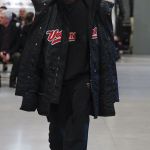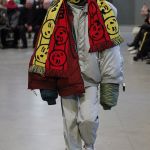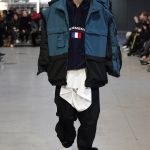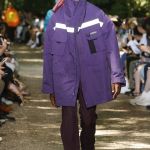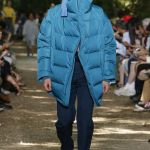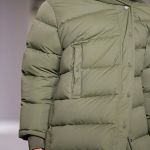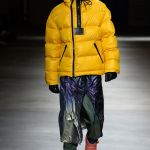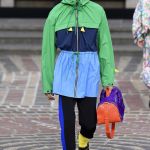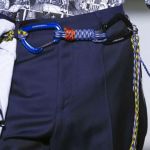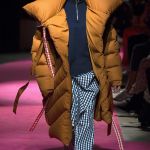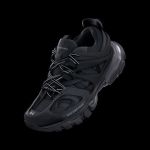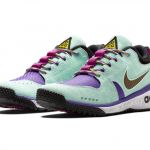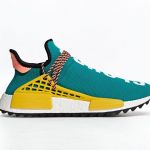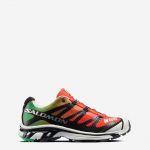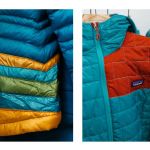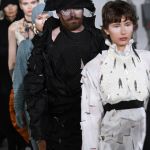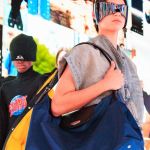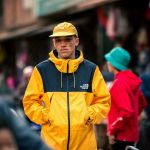
Gorpcore: how mountaineering gear became cool
The North Face > Balenciaga
October 10th, 2018
Winter is coming.
No, we’re not talking about the next season of Game of Thrones, but about what we’re going to wear in the coldest months of the year. In the eternal battle between the chic and preppy camel coat and those big oversized jackets that make you look like the Michelin man, it seems that the latter is winning. It’s a trend we’ve been seeing for the past year, born on the streets around the world from a fashion crowd always ready and eager to stand out, and very soon reinterpreted and reworked on the catwalks of the most important fashion capitals. The worlds of mountaineering, climbing and hiking have become, unexpectedly, an infinite source of inspiration for designers and fashion enthusiasts.
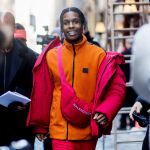
But let’s take a step back. Last May the New York based magazine The Cut came up with the expression ‘gorpcore’, a sort of (winter) extension of the normcore. If following the normcore means wearing simple, minimal items, like plain white T-shirts and normal blue jeans, the gorpcore it’s a triumph of puffer jackets, tech-fleeces and weather resistant fabrics. Because this is exactly the main point: these items are defiantly ugly, but they’re practical, respond to an utilitarian need, are meant to work, they’re comfortable and can be worn every single day. Their aesthetic is utilitarian and auxiliar to survival, function is much more important than form, performance is preferable to beauty. Socks with sandals, velcro fastening, fanny packs, oversized puffers, raincoats, tech-fleece, waterproof fabrics, all elements that were for a long time considered ugly, or not worthy of a catwalk, are now permanently part of collections of brands such as Gucci and Givenchy.
All this is strictly connected with the concept of ‘ugliness’, first introduced in the fashion world by Miuccia Prada, and then a few years ago reworked by the Georgian fashion designer Demna Gvasalia. “It’s ugly, that’s why we like it”: Gvasalia explains in this way the inevitable attraction for objectively ugly items, like, precisely, mountain jackets or hiking shoes (but we’ll talk about this later). What makes these pieces cool is that they’re not trying to be cool at all. The items are not meant to be refined or beautiful, they’re accidentally cool, and their not being cool is what makes them ultimately trendy.
Fashion enthusiasts are the first to embrace the gorpcore trend on the streets, an infinite source of inspiration for designers. When it comes to items like these ones, performance is the key, function is imperative, that’s why influencers and bloggers tend to buy puffer jackets and tech-fleeces not by Balenciaga and Kenzo, but by The North Face and Patagonia (with an exception only for Prada Linea Rossa). This is the current trend: investing (literally, if you look at the price tags) on really resistant items, meant to last thoughout the years, whose performance is always at the highest level. The North Face worked its way into the hearts of sneakerheads and hypebeats thanks to the super Instagram friendly collections in collaboration with Supreme, and then remained in the top list of the most beloved winter brands, along with Stone Island and CP Company. The e-commerce giant ASOS reports that there was a 30% increase in the research of The North Face on the website, as of the word tech-fleece.
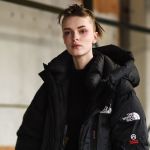
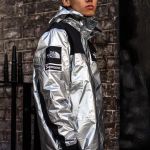

Patagonia, on the other hand, for its history and its DNA meets another type of need. Buying a lasting therefore sustainable item means also having a less significant enviromental impact, above all if the pieces, like the ones by Patagonia, are made from recycled materials.
It doesn’t take long before a streetstyle trend enters the world of high fashion. Gvasalia is the first to bring huge oversized turtleneck jackets, windbreakers worn on top of layers of different fabrics, and puffer jackets with pinstriped pants on the Vetements catwalk, and later also at Balenciaga. Other brands play with this trend as well, like Acne Studios, ALYX, Marques Almeida, Givenchy, Kenzo, while Etudes designs belts that are basically climbing ropes, that close with a carabiner.
London-based designer Martine Rose has reached the next step, blending the two different aspects of gorpcore. Not only Rose designed a collection that combines Nike Air Spiridon, bike shorts and tech-fleece, but she actually collaborated with a brand whose DNA is deeply connected with mountaineering, with no expectations to be fashionable, Napapijiri. Rose reworks the iconic jackets of the label in a cool and young way, turning them into cult item of the streetwear scene.

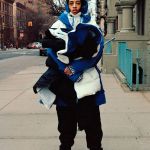

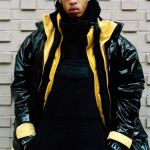
The hiking inspiration invested also the sneaker world. The first to come up with something belonging to this trend was Raf Simons, who, in collaboration with adidas Originals created the Ozweego, an objectively ugly sneaker, big, and, especially in the sole, inspired to real hiking shoes. The references to this world continued also at adidas with the Pharell x adidas Originals NMD Hu Trail, at Nike with the ACG line, to the rediscovery of brands like Merrell and above all Salomon. The last example of this trend in chronological order is the Balenciaga Track Shoe, a sneaker halfway between a track and a trail shoe, but still ugly.
This is just the lastest trend the fashion system stole from the sportswear world, after athleisure, basket and biking, it’s the turn of mountaineering.

















































